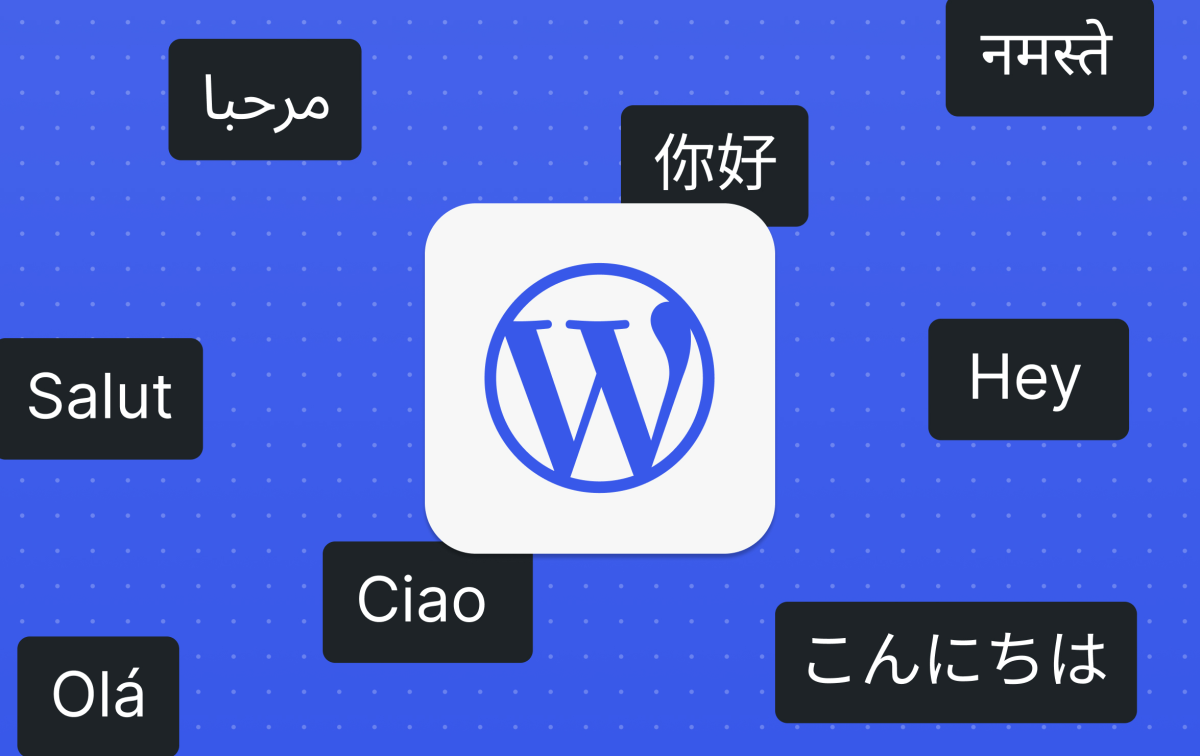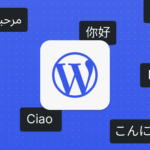Now Reading: How to Build a Multilingual Website on WordPress.com
-
01
How to Build a Multilingual Website on WordPress.com
How to Build a Multilingual Website on WordPress.com

Have you ever wondered whether having your WordPress website in multiple languages is worth it, and how much effort it actually takes?
During my recent trip to the Netherlands, I found myself navigating local websites for everything from restaurants to train schedules.
As a non-Dutch speaker, it was such a relief when I could switch to English versions without fumbling with translation tools.
That experience reminded me that a multilingual site isn’t just about translating text — it’s about making people feel included and welcome.
As a website owner, offering your content in different languages opens you up to a wider audience and invites more connections, opportunities, and even sales.
If that piques your interest, let’s explore why you should consider a multilingual website and how to create one on WordPress.com.
Benefits of having a multilingual website
Is my experience in the Netherlands not enough to convince you about turning your website or store into a multilingual one?
That’s okay!
Consider the following benefits you’ll gain if you do it anyway.
1. Sell more to a global audience
Having a multilingual website instantly expands your customer base beyond local language speakers.
During my time shopping online in the Netherlands, I skipped sites without English versions and gave my business to those that offered language options.
This simple choice applies to all website owners — your potential customers include not only locals, but also expats and tourists who might not speak the local language.
The same applies if you serve customers and ship internationally. It removes purchase barriers, gives you a competitive advantage, and builds trust with your audience.
Why should you create a multilingual website when visitors can use their browser to automatically translate? Your visitors may have Google or other forms of translation built into their browsers, but not everyone has the plugins, and they’re not always reliable. You risk losing potential customers or readers simply because their browser failed to translate, or the translation wasn’t accurate. Besides, all areas of your website may not function properly when an extension takes over. That’s why it’s always better to offer multiple languages instead of relying on browser tools.
2. Share your passion with a wider community
A multilingual blog increases your potential readership and community engagement.
If you’re blogging about news, crafts, technology, or something you’re passionate about, it’s second nature to stick to the language you speak.
Adding another language version, however, opens doors to entirely new communities.
This is especially true if you currently write in a language other than English.
Since the internet is global and language reaches across borders, offering English versions of your posts means someone from another corner of the world might discover your content and become a follower.
Sounds far-fetched? It really isn’t.
That’s exactly why I started blogging in English alongside my native language back in 2008.
Have I met people from all over the world? I most certainly have.
That’s why I recommend considering going global, even if you’re primarily writing for yourself.
3. Rank in local search results in different regions
Multilingual content also improves your search visibility in different regions.
When I was Googling in the Netherlands, most search results appeared in Dutch — including links to Dutch websites, even when those websites had an English version available.
This was clear proof that if you want to reach people in a particular region, there’s no better way than to write in their language.
By doing so, you allow search engines like Google to index your content in that language, giving your website an SEO boost.
So, when your target audience searches for something, your website has a higher chance of showing up rather than getting lost in the digital void.
Will a multilingual website really help you get more sales and traffic? In many cases, yes! Remember when I chose one website over another for shopping online simply because it was offered in a language I understood? This behavior is more common than you think.
How to create multilingual websites
Now that you know you may be leaving traffic (and money) on the table by not offering your website in more languages, your next question is likely: How do I create a multilingual website?
Let me share three different ways you can create a multilingual website (or turn your existing website into one).
Each option has its pros and cons, which I’ll explain.
Tip: Did you know you can translate the content of your posts and pages using our built-in AI Assistant? Click here to find out!
Option 1: Create multiple websites for each language
This is exactly what it sounds like: You create different websites for each language you want to offer. While it requires some effort, the payoff is definitely worth it!
This approach is best suited for:
- Large-scale business and organization websites
- Multinational companies that operate in different countries
Benefits:
- Each website can have its own content and design language.
- You can optimize each website separately for maximum SEO benefits.
- It’s much easier to tailor the tone, voice, and overall design of each version of your website while keeping true to your brand.
Drawbacks:
- A little more time and effort are required to manage and update multiple websites, especially for online stores with frequent product updates.
- This approach involves higher costs.
- It can be harder to maintain brand consistency across all versions of the website and benefit from the existing authority of your original site.
How to create multiple sites on WordPress.com
The best part: You can easily create multiple websites using the same WordPress.com account.
Whether you have different websites or the same one in multiple languages, you can have all of them in the same account, saving you from the hassle of having to log in separately to each site.
1. Create or copy an existing website.
If you’re using plans like Free, Personal, and Premium, click here and start creating a new website.
Or, if you have the Business plan or higher, use our Copy a site feature to effortlessly copy your entire site into a brand new one.
Click the W logo at the top left of your screen to see your Sites.
Then, click the three dots next to the website you wish to copy and click Settings.
Scroll down to the “Actions” section and click the “Duplicate” button.

Next, give your new website a domain name.
You can opt for a completely different domain name, like my-website.com on the primary website and mon-site.com for the French version.
Or you can use a subdomain like fr.my-website.com to keep all versions of the website on the same domain name.
Not ready to set a domain name yet? No worries! You can type a name for your new website and pick the free address option that will appear in the list.
Then, choose a WordPress.com plan for your new website.
Not sure which plan is right for you? Check out our plans and pricing to learn more.

In most cases, you can purchase the same plan you have on your primary website for your localized ones.
For example, if you have the WordPress.com Business plan on your main site, you can choose the Business plan for the other version, too.
Keep in mind that each website will need to have its own plan.
2. Sit back and wait
You’ll see a progress bar as our system starts copying your website.

This means you can safely navigate away from the screen.
We’ll email you once your new website is ready.
You can then edit the content and translate it as needed.
Option 2: Publish multiple versions on the same site
If you’d like to stick to a single website while offering your content in multiple languages, you’re not out of luck!
With a bit of planning and organizing, you can have multiple versions of the same posts and pages on the same website.
This approach is best suited for:
- Personal and company blogs
- Local businesses
Benefits:
- It’s relatively straightforward to set up — you won’t have to manage multiple websites.
- You’ll be able to use one dashboard to manage all of your website’s content.
- Perfect for growing blogs and small, information-oriented websites.
Drawbacks:
- Pages can look cluttered if multiple versions are in the same place.
- The audience of one language may unintentionally land on a page written in a different language, causing confusion.
- Search engines may struggle to recommend your website to a specific audience, especially if they detect multiple languages on the same page.
How to implement this approach on WordPress.com
If this option best suits your needs, I recommend creating different pages and posts for each language rather than adding all translated copies on the same page.
This provides a better user experience with clear separation between languages.
When readers land on your website, they can continue reading content in their chosen language. You can add internal links to other posts written in the same language, reducing the “bounce rate” and keeping visitors on your website longer.
For navigation between languages, add a language switcher to your menu. For example:

Although language switchers work best with third-party plugins (more on this in Option 3), you can create a simple version by:
- Creating multiple pages in different languages (including separate homepages)
- Adding links in your menu to the corresponding pages in other languages
This way, visitors can easily switch between language versions of your site while maintaining a clean, organized structure.
Option 3: Use a multilingual plugin
Using a plugin (developed by third-party developers) can be a fantastic choice if you want to have your website in different languages without having to show different versions on the same page.
One of the most popular plugins for creating a multilingual website in WordPress is Polylang.
It lets you create multiple versions of every post and page, as well as add a language switcher to the navigation menu of your website, so that visitors can choose their language and see all content in their selected language.
This approach is best suited for:
- Ecommerce websites that manage stocks of their products
- Professional websites that need content in multiple languages
- Content-heavy sites with lots of pages to translate
Benefits:
- Visitors can switch languages easily with a toggle or menu.
- Strong SEO support. Plugins help Google index each language separately.
- You keep one single website, but with structured management for translations.
- Good scalability for larger sites or businesses.
Drawbacks:
- Initial setup can take a bit of time.
- Some plugins are premium (extra cost).
- Needs a consistent translation workflow to avoid confusion.
How to implement this approach on WordPress.com
Each multilingual plugin has its own specific setup process and guidelines.
For example, if you choose to use Polylang, you’d follow their documentation for the most up-to-date instructions.
I’d suggest checking out the Polylang plugin description to get started. You can also browse other multilingual plugins for your website.
Bonus: Use our AI Assistant to translate your posts and pages
I know you’re wondering, so I figured, why not sprinkle it in, too!
If you have an existing website, getting help from AI can be the fastest way to translate all the content into a new language.
The methods I mentioned above are all for creating different versions of your website in multiple languages.
You still have to manually translate the content.
However, you can use our AI Assistant block to complete this task.
One of the coolest things it can do is it can access the content of the entire page you’re editing.
So, if you open up one of the pages that was written in English, you can insert the AI Assistant block at the top or bottom of your page and ask it to translate the content automatically for you.

For example, I used the following prompt: “Translate this page into Spanish.”

In seconds, you’ll get your copy translated and optimized.

Once the AI Assistant block has finished generating the content, click the “Accept” button to insert it into the editor.

You can then add a separator or simply copy the translated version and paste it into the other page.
As you can see, the AI Assistant block is a powerful tool to speed up the translation process for your website.
However, for accuracy, I’d still recommend performing a human review, especially if you have a business website.
Ready to reach new audiences with your multilingual site?
The bottom line is: Going multilingual with your online store, hobby blog, or professional website doesn’t have to be overwhelming.
Since WordPress.com gives you the flexibility to choose, pick the right method based on your time commitment, goals, budget, and audience.
Are you still in doubt about going multilingual with your WordPress.com website?
Let us know what kind of website it is and what’s preventing you from offering it in more languages in the comments below.
For WordPress.com websites on a paid plan, you can also reach our support team to discuss your multilingual needs directly.
We’re ready to help you choose the right method!
Original Post https://wordpress.com/blog/2025/11/06/how-to-build-a-multilingual-wordpress-website/















